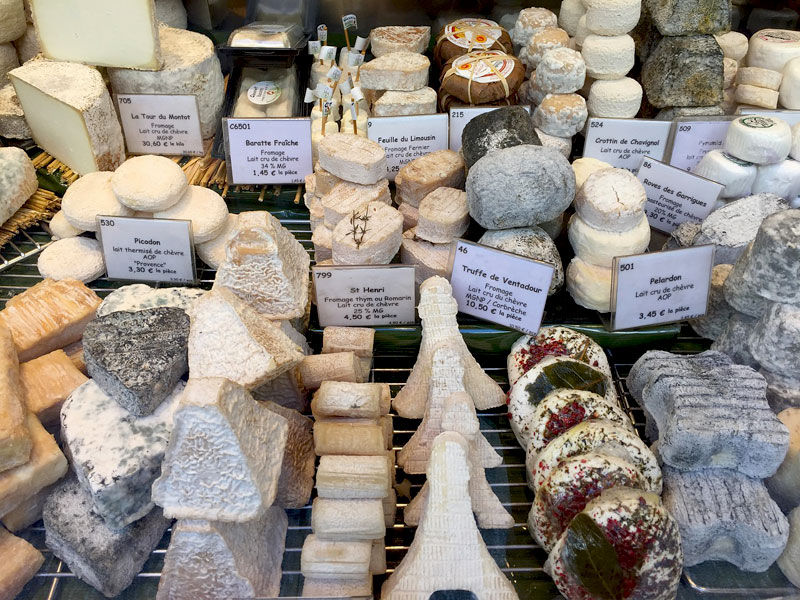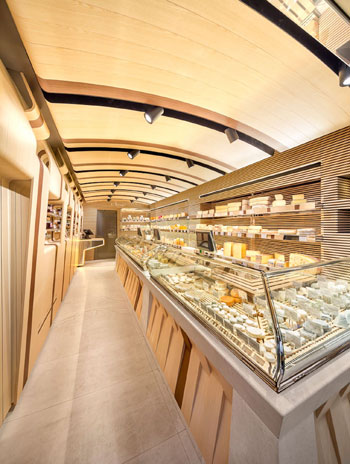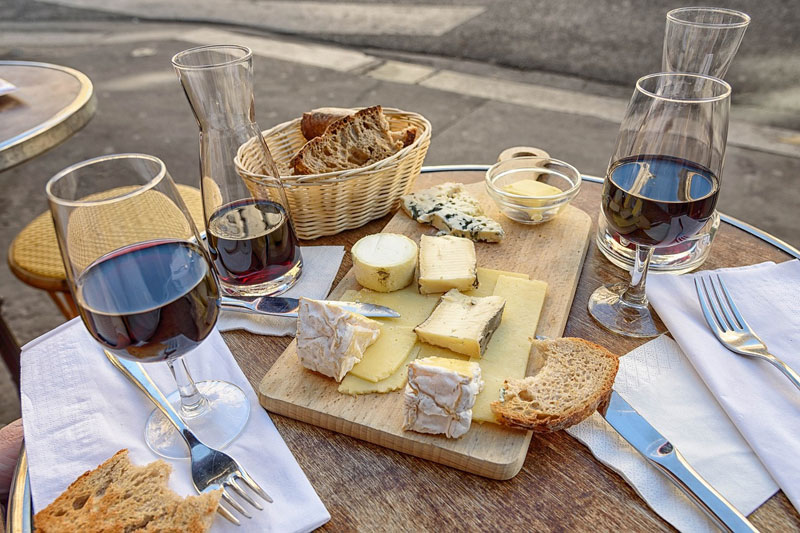
It’s said that Napoleon first tasted Camembert in Normandy and kissed the waitress who served him. Great cheese makes you very happy. Presidents Obama and Hollande were offered the best of French cheeses at the Climate Change Forum in 2015 from a Parisian fromagerie – Alleosse. This great honour demonstrated how much the French, with their AOP authenticity protection system for cheese, take pride in their home-grown produce.
Concours General Agricole Paris
Every year on the outskirt of Paris at Porte De Versailles, the great agricultural exhibition takes place – Concours General Agricole. Showcasing food from the field, honey, oils and wine. Every two years cheese takes pride of place. Thousands of cheesemongers, buyers and amateur turophiles (cheese connoisseur) taste, grade and award prizes. It’s a good place to go for true cheese lovers.
Cheese in France
There are 45 AOP cheeses recognised as authentic and deep-rooted in origin. These are grouped into four types – Farm, Artisanal, Co-operative and Industrial. They range from small farmers using their own herd’s milk through to the big producers drawing on milk from many sources. The AOP however pulls the two extremes together. Cleanliness and methods of production are tightly regulated. The small farm must invest in equipment and methodology, the industrialist must produce a niche cheese amongst his supermarket plastic wrapped.
Estimated at almost a thousand different cheeses available in France, you are spoilt for choice. The French climate contributes a diverse range of flavours from mild to pungent. The minerals of the land find their way into the grass and thus into the milk. Salers cows of the Auvergne graze on volcanic minerals. Lush Alpine plains feed goats and in the hotter climates of the stony Pyrenees, sheep herds provide the milk for some of the tangiest tasting cheeses.
Cheese shops in Paris
 Alleosse: 13 Rue Poncelet (17th Arr). This cheese shop is pristine, like a spaceship with its light wood and sparkling glass fronted counters. The choice is mouth-watering. But below this shop is an extraordinary surprise. Cheeses need maturing, called affinage. Tender care is applied to avoid drying and cracking. Humidity encourages moulds and flavour. Below this cheese shop are the only cheese caves of the city – 300 square meters worth. The four huge cellars are temperature controlled to suit the diverse types of cheese within.
Alleosse: 13 Rue Poncelet (17th Arr). This cheese shop is pristine, like a spaceship with its light wood and sparkling glass fronted counters. The choice is mouth-watering. But below this shop is an extraordinary surprise. Cheeses need maturing, called affinage. Tender care is applied to avoid drying and cracking. Humidity encourages moulds and flavour. Below this cheese shop are the only cheese caves of the city – 300 square meters worth. The four huge cellars are temperature controlled to suit the diverse types of cheese within.
Fromagerie Quatrehomme: 62 Rue de Sevres (7th Arr). The shop is rather old-fashioned and a little walk down from La Bon Marché, the first department store in Paris. The shop has a great family pedigree of generations of cheese sellers culminating with the present owner’s mother – Marie Quarterhomme. She received the Chevalier de la Legion d’Honneur in 2014 for her contribution to cheese. For an informative discussion about dinner-party cheese or creating a cheeseboard, this shop is hard to beat. Their knowledge of suppliers is extensive.
Laurent Dubois: 47 Boulevard Saint-Germain (6th Arr). You would miss this this tiny shop if you blinked. On the edge of a cobbled market area off the main street, the shop is a delight. Through a plastic curtain you enter a tiny cheese heaven. Quaint timber racking holds cheeses that are aged a little longer than is customary and that gives a little more flavour and texture to some of the cheeses.
Chez Virginie: 54 Rue Damrémont (18th Arr). Cheeses are presented with fresh herbs and pretty blue and white name cards in this vintage style shop. The owner Virginie is third generation and passionate about offering clients a wide variety of exclusively raw milk cheeses from smaller farms and artisan producers. Some cheeses are quite rare.
How to eat cheese the French way
Cheese is eaten before dessert, so you can finish the wine before changing to the dessert wine. And, if the cheese if forté [smelly in other words], your breath wont smell after dinner.
Eat bread with cheese, not crackers which are usually salty and compromise the taste of the cheese.
Serve cheese at room temperature. There’s a way to cut your cheeses correctly. Rind plays its part in the aging process. Some cheeses have multi layers of flavour and therefore your slice of cheese should embrace this. The tip of a brie has more flavour than the centre, therefore do not hack the end off and serve as a portion.
Serve a mixed cheese board. Hard and soft cheeses. Cow, sheep and goats milk varieties. Maybe a mix of raw and pasteurized to open a heated debate on the subject of microbes and modern farming.
Use a knife for each cheese. Do not contaminate your hard cheeses with a smear of soft. Work from mild cheeses to the more robustly and often smellier ones, to acclimatize the palette.
And finally as the proverb goes in France: “A meal without cheese is like a day without sunshineâ€.
More on Cheese
Reasons to love France: Cheese
The most delicious French goats cheese made with a secret ingredient: passion
Deliciously gooey Camembert recipe
French cheese plate ideas
Judi Castille is a freelance writer, illustrator and landscape/farm photographer with a passion for gardening and cheese. She lives permanently in Creuse, Limousin in the heart of cow country and blogs at:Â judicastille.com
The post Some of the best cheese shops in Paris appeared first on The Good Life France.
0
